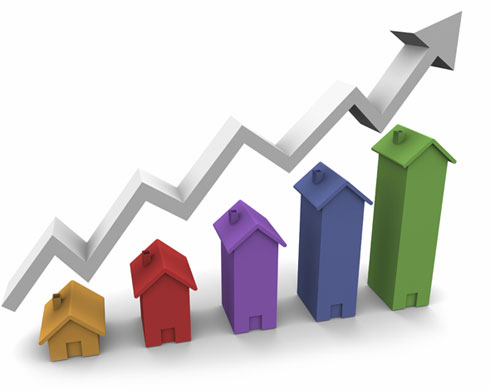Why now is the most favorable time to buy a home?
Unlike many publications on the subject, designed to encourage consumers to purchase a home, we will give an economically justified response to a question that many people ask: Is now the most profitable time to buy a home?
Considering that the purchase of housing for most people is the most expensive decision you will make in your life, choosing a suitable time to buy is crucial for the future state of their family budget.

The cost of housing, and all other marketed goods and services form the basis of the economic model of supply and demand.
Simply put, when the number of those wishing to purchase housing is increasing faster than the number of properties available on the market, sellers increase to reap maximum benefits for themselves.
The specifics in housing is that those who want to buy can be increased only for a few weeks while construction of buildings requires technical time of at least several months. Adding and sluggish state administration, which every developer faces to obtain the necessary building permits, the process may take even years.
We can open and a bracket that is, to satisfy the high demand in 2006-2008 transactions for property purchase “green” (still unfinished) had become customary for the market. After the economic crisis, however, a large number of construction sites were frozen and some buyers even at the present time have not been able to get into your home. That is why Coincidentally, at the moment the desire of new buyers for the purchase of finished housing, which further reduces the volume of supply and hence naturally the price increases.
However, housing demand is directly linked to obtaining financing for the purchase. Property prices kept a level that to be saved the required amount, it will take at least 10-20 years. During this time you savings will depreciate due to inflation. So logically solvent demand of property is directly tied to the interest conditions on loans granted by banks. The lower interest rates are on them, the more attractive are for consumers.

We see that from the beginning of 2000, interest rates on loans go down during the period 2006 – 2008 reserve levels around 8%. Reducing the interest provoked more consumers start looking for homes, because their costs to repay the loans are low. So the uncertainty which solvent demand outstrips supply and the cost of housing starts to rise. After increasing interest rates, record opposite trend – consumers refrain from making loans and house prices suddenly begin to fall.
Recent years have witnessed a steady trend to reduce interest rates on home loans on offer. According to the latest data published by the National Bank, the average interest rate on loans for house purchases in April 2016 compared to April 2015 decreased by 1.13 percentage points to 6.05%, while loans in EUR – by 0.43 percentage points to 6.83%.
These interest rates are the lowest in our sample time period of 16 years.
Unfortunately, the latest published data of the NSI for the cost of housing to the end of 2014, however, they clearly show that the reduction of prices not only stopped, but they are starting to rise. Increase was registered in the prices of the announced offers electronic websites selling real estate.
Consideration of data we can see that the decline in interest rates on housing loans are transformed by raising prices with a time lag of several months.
The reduction in lending rates was registered trend over the past few years, but this was not reflected significantly in the prices of property to a year ago. The reported increase suggests that property prices will begin to rise in the coming years.
From the analysis we need the conclusion that the present moment is proving the most optimal for the purchase of housing, as interest rates on home loans on offer are low and property prices have not yet risen to the peak levels recorded in 2008 on










